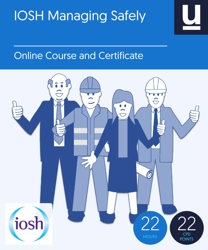What are the Personal Protective Equipment at Work (Amendment) Regulations 2022?
Personal protective equipment (PPE) is frequently used in workplaces throughout the UK, and plays an essential role in protecting workers from experiencing injuries or ill health. As a result of this, the provision and use of PPE is controlled in the UK by the Personal Protective Equipment at Work Regulations 1992, which place several duties and responsibilities on employers and employees.
On the 6th April 2022, these duties were expanded by the Personal Protective Equipment at Work (Amendment) Regulations 2022 to cover limb (b) workers. In this article, we will explore the original Personal Protective Equipment Regulations, and outline the changes an employer must make as a result of this 2022 amendment.
What are the Personal Protective Equipment at Work Regulations 1992?
Before looking at what has changed, let's look at the requirements of the original Personal Protective Equipment at Work Regulations 1992 (which we will refer to as PPER 1992).
PPER 1992 defines personal protective equipment (PPE) as 'all equipment (including clothing affording protection against the weather) which is intended to be worn or held by a person at work and which protects him against one or more risks to his health or safety, and any addition or accessory designed to meet that objective', and requires employers to provide suitable PPE to any employees who may be exposed to health and safety risks while at work.
When determining whether PPE is required, an employer should use a risk assessment to identify the risks present in the workplace and the hierarchy of control to assess which measures are required to control these risks:
- Elimination - This involves removing a hazard completely.
- Substitution - This involves replacing the hazard with something that poses a lesser risk.
- Engineering controls - This involves isolating people from the hazard in some way.
- Safe systems of work - This involves changing the way people work to prevent them from coming into contact with the hazard.
- PPE - This involves providing workers with personal protective equipment.
As this hierarchy shows, providing PPE is the least effective control measure and should always be used in situations where there is no better alternative.
If personal protective equipment is required, PPER 1992 requires an employer to:
- Provide it free of charge.
- Ensure that it is suitable and compatible.
- Maintain it.
- Store it correctly.
- Ensure that it is used properly.
- Provide appropriate information, instruction and training on how to use it.
For more information on PPER 1992, click here to view the HSE's guidance on the regulations.
What does the 2022 amendment change?
The 2022 amendment to the Personal Protective Equipment at Work Regulations 1992 (which we will refer to as PPER 2022) does not make any significant changes to the responsibilities that employers have to provide suitable PPE.
However, the 1992 regulations only required employers to provide PPE for limb (a) workers, but this has been expanded by the 2022 amendment to incorporate limb (b) workers too.
What are limb (a) and limb (b) workers?
Limb (a) workers are those with a contract of employment that provides them with regular hours and a guaranteed wage. Under PPER 1992, they must be provided with any necessary personal protective equipment required to protect them from any hazards they may experience at work.
Limb (b) workers are those who work under a casual contract, such as those on zero-hours contracts or working as part of the 'gig economy', who have fewer employment rights than limb (a) workers. For example, limb (b) workers are those who:
- After 1 month of continuous service, receive holiday pay but not other employment rights such as the right to a minimum period of statutory notice.
- Have a contract or other arrangement to do work or services personally, and cannot freely subcontract this work to others.
- Only carry out work when they wish to, but are not self-employed or responsible for advertising their services to customers directly.
It is important to note that self-employed workers are not considered to be limb (b) workers and, under PPER 1992, are responsible for providing their own personal protective equipment where required.
For more information on personal protective equipment, and how to effectively manage health and safety in the workplace, consider taking one of our training courses:



